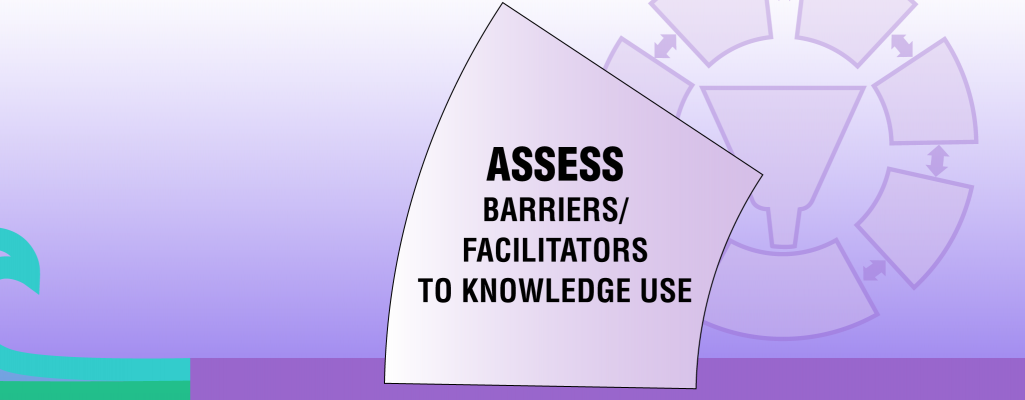
What is the phase ‘Assess barriers/facilitators to knowledge use’?

In the previous phase, 'Adapt Knowledge to the Local Context', you and your change team identified unique characteristics of your practice setting. This phase is about identifying potential barriers that may limit the uptake of knowledge and/or impede your change initiative, as well as facilitators that can improve the likelihood of success in your setting. The aims of this step are to target and overcome barriers and take advantage of facilitators to maximize positive outcomes (Graham et al., 2006; RNAO, 2002; RNAO, 2012).
Regardless of the scope of your practice change, it is important to clearly understand the uniqueness of your setting by identifying what prevents you or end-users to use the knowledge in question. With this information, you will be able to select the strategies that directly address the identified barriers and take advantage of existing facilitators (Health Canada, 2017). In this phase, you will learn more about various types of barriers and facilitators.

Barriers may impede success

Facilitators enable success
Why is the phase ‘Assess Barriers/Facilitators to Knowledge Use’ important?
This phase will help you answer these questions (Health Canada, 2017):
- What barriers could limit or prevent providers or patients/persons from using the knowledge?
- What can my team do to reduce the identified barriers?
- What could facilitate the use of knowledge in my setting?
- What can my team do to take advantage of identified facilitators?
Remember: Identifying barriers and facilitators helps you identify implementation strategies for your change initiative. It can also help prevent mistakes and frustrations!
When strategies are designed to address barriers and enhance facilitators, change initiatives are:
- feasible
- acceptable to staff
- less costly
- sustained
